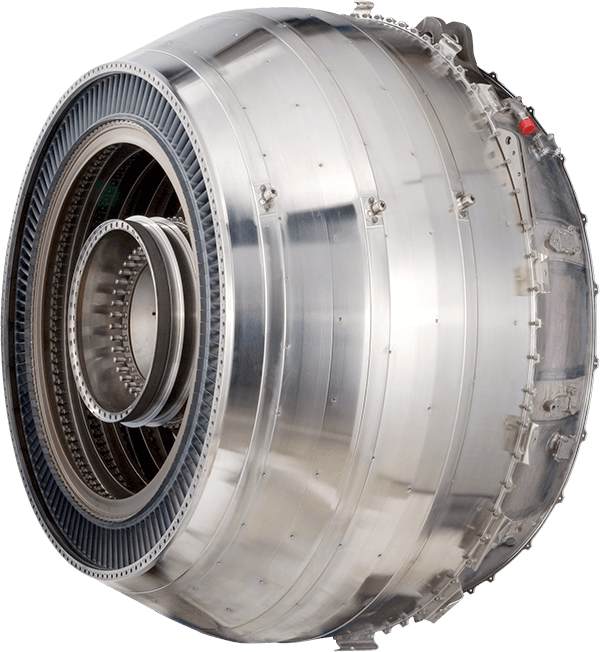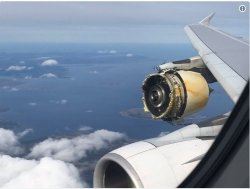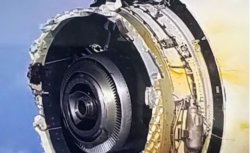You are using an out of date browser. It may not display this or other websites correctly.
You should upgrade or use an alternative browser.
You should upgrade or use an alternative browser.
A380 with engine trouble
- Thread starter UP4014
- Start date
- Status
- Not open for further replies.
Ansett
Established Member
- Joined
- Jul 13, 2011
- Posts
- 4,132
- Qantas
- Platinum 1
- Virgin
- Red
- Oneworld
- Emerald
Just heard on the news Air France 380 in touble with an engine out.
Didn't hear where though.
Over the Atlantic and all is safe.
Air France plane loses engine cover above the Atlantic Ocean
- Joined
- Nov 12, 2012
- Posts
- 29,720
- Qantas
- Platinum
- Virgin
- Platinum
- Star Alliance
- Gold
- Joined
- Nov 12, 2012
- Posts
- 29,720
- Qantas
- Platinum
- Virgin
- Platinum
- Star Alliance
- Gold
Aviation Herald's report is brief at the moment, but with much the same pics.
Usual bozo comments, though (Its a 'Engine Alliance' P&W engine, not RR):
Just a thought: Interesting choice of Goose Bay Vs Gander airports. Can't be more than a handful of minutes between the two. I guess as we've read in the 'Ask the Pilot' thread its THE closest rather than the best equipped (no A30 stairs at Goose Bay).
Usual bozo comments, though (Its a 'Engine Alliance' P&W engine, not RR):
This is not the first A380 to have enengine blow apart in the air. Rolls Royce needs to be held accountable. I am starting to question the safety of this plane.
Just a thought: Interesting choice of Goose Bay Vs Gander airports. Can't be more than a handful of minutes between the two. I guess as we've read in the 'Ask the Pilot' thread its THE closest rather than the best equipped (no A30 stairs at Goose Bay).
Last edited:
jb747
Enthusiast
- Joined
- Mar 9, 2010
- Posts
- 13,280
I guess as we've read in the 'Ask the Pilot' thread its THE closest rather than the best equipped (no A30 stairs at Goose Bay).
Stairs should never come into the calculation. Anyway, the lower deck isn't that much different from aircraft such as the 777 and 747, so not the issue you might imagine.
I don't have the 380 data for either of these runways, so whilst both are obviously long enough, there can be other things that restrict 380 ops, such as obstructions near the runways/taxiways. They are very big wings.
But, in this instance it's not necessarily the nearest runway. After all, it's an engine failure in a four engined aircraft. Fuel burn would go up by about 15%. You lose a generator, but not any hydraulics. Once tidied up, as long as there's no damage that we can't see in the pictures, it should be reasonably straight forward. The approach speed from FR24 is quite normal, so it doesn't appear that there have been collateral issues.
Last edited:
- Joined
- Nov 12, 2012
- Posts
- 29,720
- Qantas
- Platinum
- Virgin
- Platinum
- Star Alliance
- Gold
JB, I struggle with understanding what's under the hood of my car, let alone a jet engine. Does it appear to you that the front fan blades have 'gone'?
Melburnian1
Veteran Member
- Joined
- Jun 7, 2013
- Posts
- 25,514
I searched to see whether the AF engine explosion that forced a Canadian landing had been covered yet on AFF, so if it has, please amalgamate this question.
Not all airlines use the Engine Alliance engines for their A380s - from memory, Qantas uses Rolls Royce:
Incident: France A388 over Greenland on Sep 30th 2017, fan and engine inlet separated
Will the AF incident lead to any A380 groundings or urgent inspections?
Which A380 operates use these engines? (With a quick look, I couldn't find a list.)
Not all airlines use the Engine Alliance engines for their A380s - from memory, Qantas uses Rolls Royce:
Incident: France A388 over Greenland on Sep 30th 2017, fan and engine inlet separated
Will the AF incident lead to any A380 groundings or urgent inspections?
Which A380 operates use these engines? (With a quick look, I couldn't find a list.)
Last edited:
Read our AFF credit card guides and start earning more points now.
AFF Supporters can remove this and all advertisements
jb747
Enthusiast
- Joined
- Mar 9, 2010
- Posts
- 13,280
How to describe a jet engine in less than a book....
Ok. Imagine a shaft. Put a big fan on one end, and a small fan at the other. Put a combustion chamber between the two. Let the exhaust from the combustion impinge upon the small fan. That will rotate the shaft, and turn the big fan.
Make the shaft hollow, and put another shaft through the middle. Put fans at both ends of it. That will mean you have two shafts rotating separately, with a couple of fans at the intake end (compressors) and a couple at the exhaust end (turbines). Mostly there are multiple fans at each end of a shaft.
An engine with two shafts is considered to be dual spooled, and if it has three it's a triple. Rolls often used triples.
So, basically power is being taken from the combustion by the turbine section, and used in turn to drive the compressor section. The air from the fan (the very first stage) is mostly directed outside of the core (combustion section) of the engine, and can be considered a fancy propellor.
If a shaft breaks (for whatever reason), that shaft instantly loses the drag of the compressor section, but the turbine will still be driven. That will result in an immediate, huge overspeed, well beyond human intervention, which will overspeed the turbine section to such an extent that it will fail. That leads to a QF32 type of engine breakup. No form of containment can possibly stop a failed disc...it can only stop individual blades.
Between the various discs (fans) there are other, fixed series of blades. These are called stators, and are used to control the airflow going to the next rotating stage. So, when you look at the front of an engine from the terminal, you can see the fan, but from up close you can see that behind the fan there's another set of blades...stators.
In the image of the engine here, around the outside of the engine you can just make out large blades, which look to be fan stators. The smaller silver blades that surround the hub, look like the entry to the core. This is an EA image of their compressor...

There was a similar looking failure on a 737 in the USA earlier in the year.
Ok. Imagine a shaft. Put a big fan on one end, and a small fan at the other. Put a combustion chamber between the two. Let the exhaust from the combustion impinge upon the small fan. That will rotate the shaft, and turn the big fan.
Make the shaft hollow, and put another shaft through the middle. Put fans at both ends of it. That will mean you have two shafts rotating separately, with a couple of fans at the intake end (compressors) and a couple at the exhaust end (turbines). Mostly there are multiple fans at each end of a shaft.
An engine with two shafts is considered to be dual spooled, and if it has three it's a triple. Rolls often used triples.
So, basically power is being taken from the combustion by the turbine section, and used in turn to drive the compressor section. The air from the fan (the very first stage) is mostly directed outside of the core (combustion section) of the engine, and can be considered a fancy propellor.
If a shaft breaks (for whatever reason), that shaft instantly loses the drag of the compressor section, but the turbine will still be driven. That will result in an immediate, huge overspeed, well beyond human intervention, which will overspeed the turbine section to such an extent that it will fail. That leads to a QF32 type of engine breakup. No form of containment can possibly stop a failed disc...it can only stop individual blades.
Between the various discs (fans) there are other, fixed series of blades. These are called stators, and are used to control the airflow going to the next rotating stage. So, when you look at the front of an engine from the terminal, you can see the fan, but from up close you can see that behind the fan there's another set of blades...stators.
In the image of the engine here, around the outside of the engine you can just make out large blades, which look to be fan stators. The smaller silver blades that surround the hub, look like the entry to the core. This is an EA image of their compressor...

There was a similar looking failure on a 737 in the USA earlier in the year.
Flying Fox
Established Member
- Joined
- Jul 13, 2006
- Posts
- 2,981
- Qantas
- Silver Club
- Joined
- Jan 29, 2012
- Posts
- 15,885
- Qantas
- LT Gold
- Virgin
- Red
- Oneworld
- Emerald
Threads merged.
jb747
Enthusiast
- Joined
- Mar 9, 2010
- Posts
- 13,280
There is no way to say why the fan has come adrift from the information available. I'd like to see some pictures of the wing. At first glance it looks like reasonably straightforward event from the coughpit perspective. The loss of the engine driven generator is trivial. Hydraulics should have been maintained.
Ok, there are now some pics around that seem to show a bit of damage to the slats, but they've still functioned correctly. That fits in with the landing approach speed, which wasn't all that high.
It will be interesting to hear (if we ever do) just what ECAMs the crew got.
Ok, there are now some pics around that seem to show a bit of damage to the slats, but they've still functioned correctly. That fits in with the landing approach speed, which wasn't all that high.
It will be interesting to hear (if we ever do) just what ECAMs the crew got.
Himeno
Senior Member
- Joined
- Jun 15, 2011
- Posts
- 5,508
Here are the charts for the airports:I don't have the 380 data for either of these runways, so whilst both are obviously long enough, there can be other things that restrict 380 ops, such as obstructions near the runways/taxiways. They are very big wings.
Gander http://www.gcmap.com/diagrams/pdf/CYQX.pdf
Goose Bay http://www.gcmap.com/diagrams/pdf/CYYR.pdf
The A380 landed on Runway 26 at YYR, then taxied onto F before stopping on P for inspection.
jb747
Enthusiast
- Joined
- Mar 9, 2010
- Posts
- 13,280
Jeppesen produce additional 380 charts that show allowed taxiways, etc. At most airports, many taxiways are not usable. I don't see any issues with what they have done. Looking at the images of the engine, I expect the possibility of having it depart the aircraft entirely would have been discussed. That would lead you to at least considering limiting just what you fly over.
- Joined
- Jun 20, 2002
- Posts
- 17,780
- Qantas
- LT Gold
- Virgin
- Platinum
Found this ATC chat between Goose Bay and AF66:
Last edited:
- Joined
- Nov 12, 2012
- Posts
- 29,720
- Qantas
- Platinum
- Virgin
- Platinum
- Star Alliance
- Gold
Thanks QF WP. I'm guessing the "AF66 Super Mayday" repeated by Air France is a Franglais way of saying "AF heavy Mayday"
Himeno
Senior Member
- Joined
- Jun 15, 2011
- Posts
- 5,508
A380 falls in the ICAO "Super" category. I think it is the only type in that category. The AF pilots were using the correct terms. The ATC was using "Heavy" incorrectly. Perhaps because the controllers at/around YYR rarely, if ever, have to deal with A380s, but would be more used to the Heavy calls for 747s, 777s, some types of A330 and 767, etc.Thanks QF WP. I'm guessing the "AF66 Super Mayday" repeated by Air France is a Franglais way of saying "AF heavy Mayday"
- Status
- Not open for further replies.
Become an AFF member!
Join Australian Frequent Flyer (AFF) for free and unlock insider tips, exclusive deals, and global meetups with 65,000+ frequent flyers.AFF members can also access our Frequent Flyer Training courses, and upgrade to Fast-track your way to expert traveller status and unlock even more exclusive discounts!

AFF forum abbreviations
Wondering about Y, J or any of the other abbreviations used on our forum?Check out our guide to common AFF acronyms & abbreviations.
Recent Posts
-
-
QFF Platinum requesting release of extra Classic Reward seats?
- Latest: HarryTheFlyer
-
-
-
Currently Active Users
- HarryTheFlyer
- RB001
- tjb
- Skwinky
- SYD
- JohnTSG
- bablong
- PrezRegan
- drcam
- garrence
- Flechette1866
- tielec
- BriarFlyer
- QFFHntrGthr
- GoingGrey
- Aeryn
- ric_melb
- Kid
- Brettmcg
- BRIS_VA_HAWK
- markis10
- paddywide
- Scr77
- animusmh12
- accompanimince
- Aussie_flyer
- flyguy77
- Timba-Jet
- ellen10
- hj.au
- Vipers
- wentworthmeister
- Forg
- TomDrinkwater
- unc
- swellington
- vm3365
- deka2
- DejaBrew
- Notyourbag
- Steady
- MELso
- ThatWineGuy
- funnybrus
- Black Duck
- duffyd
- vyralmonkey
- DaveLoftus
- WCFCHobart
- Timratoo
Total: 719 (members: 98, guests: 621)

















